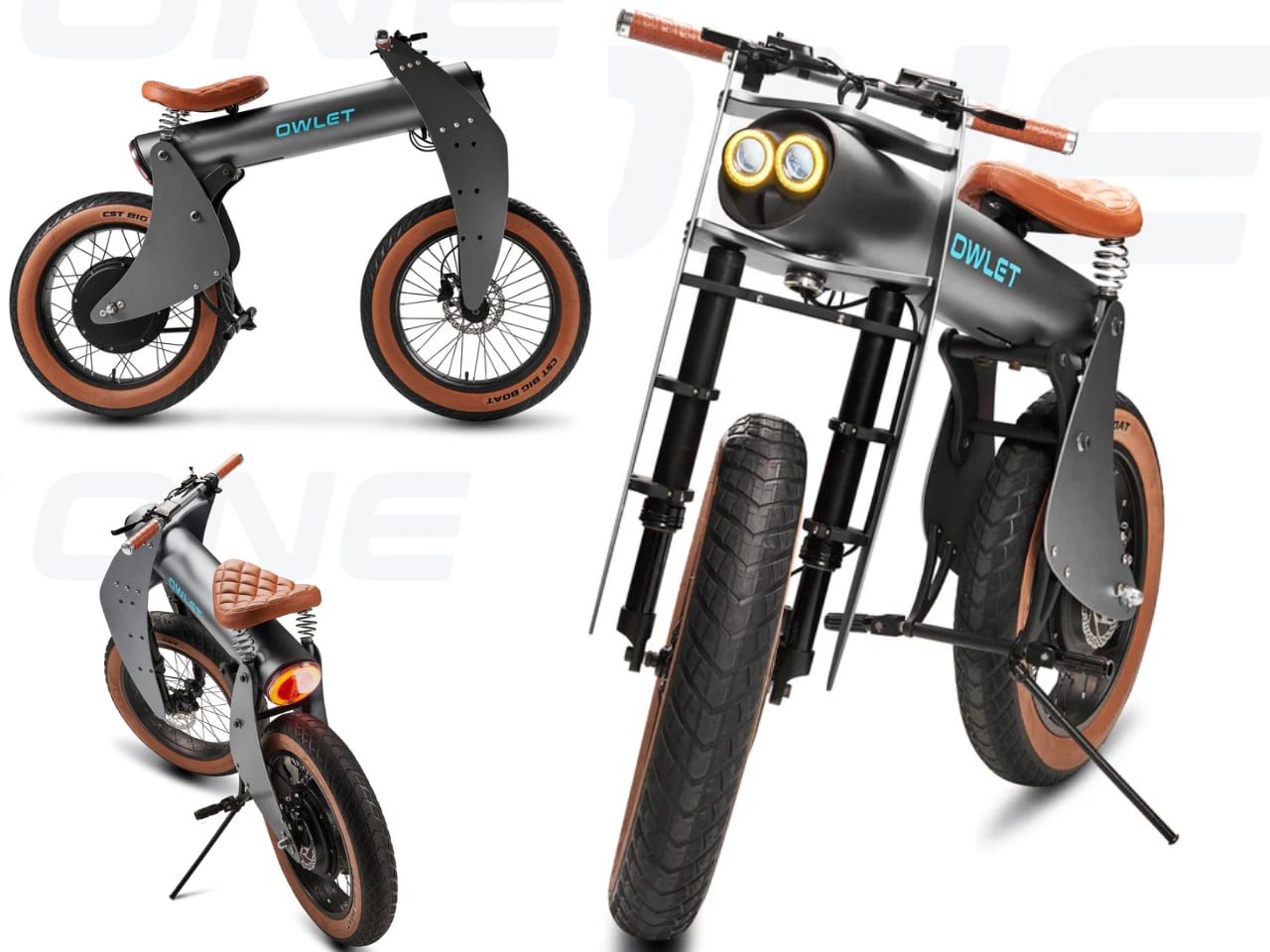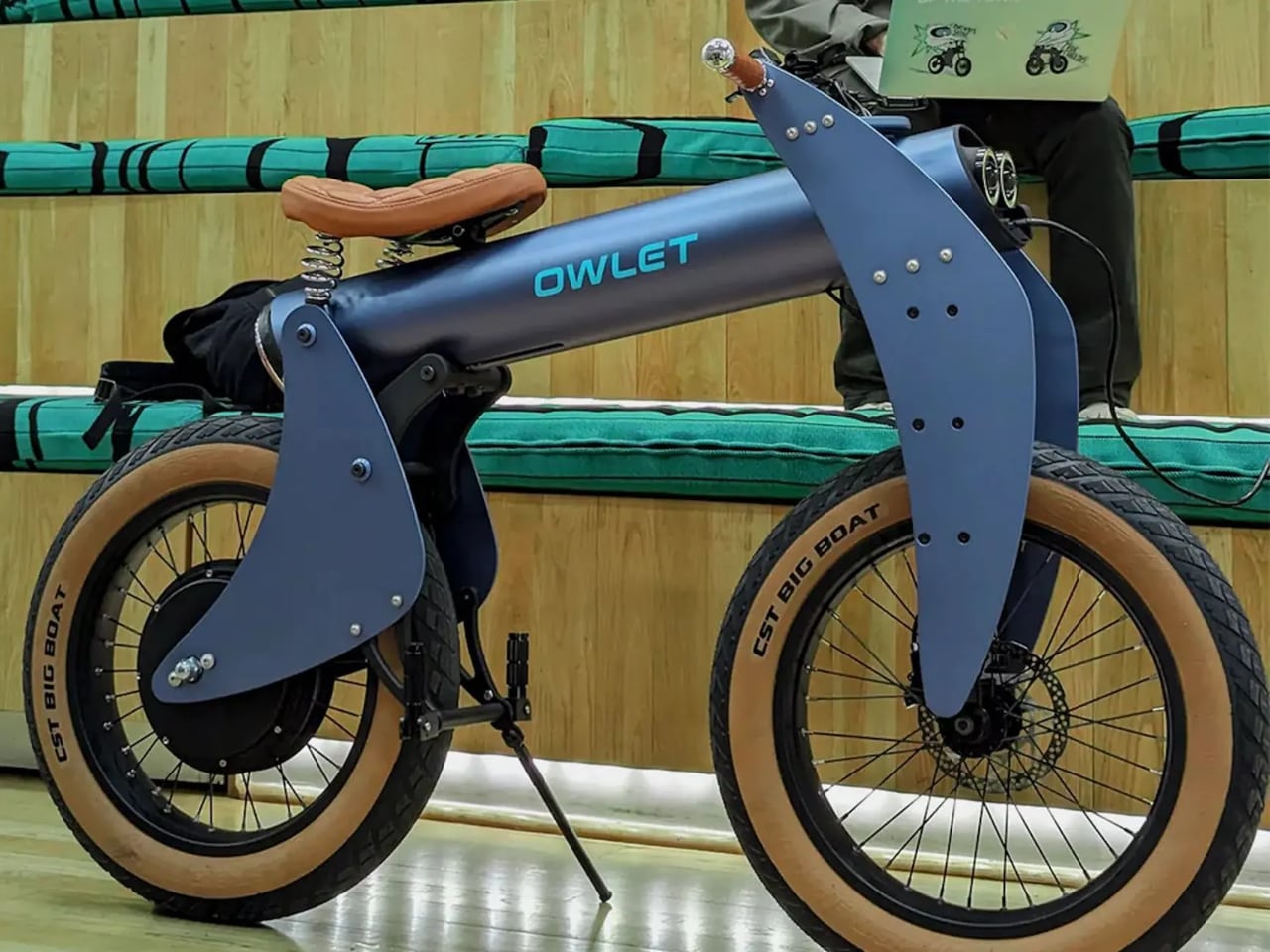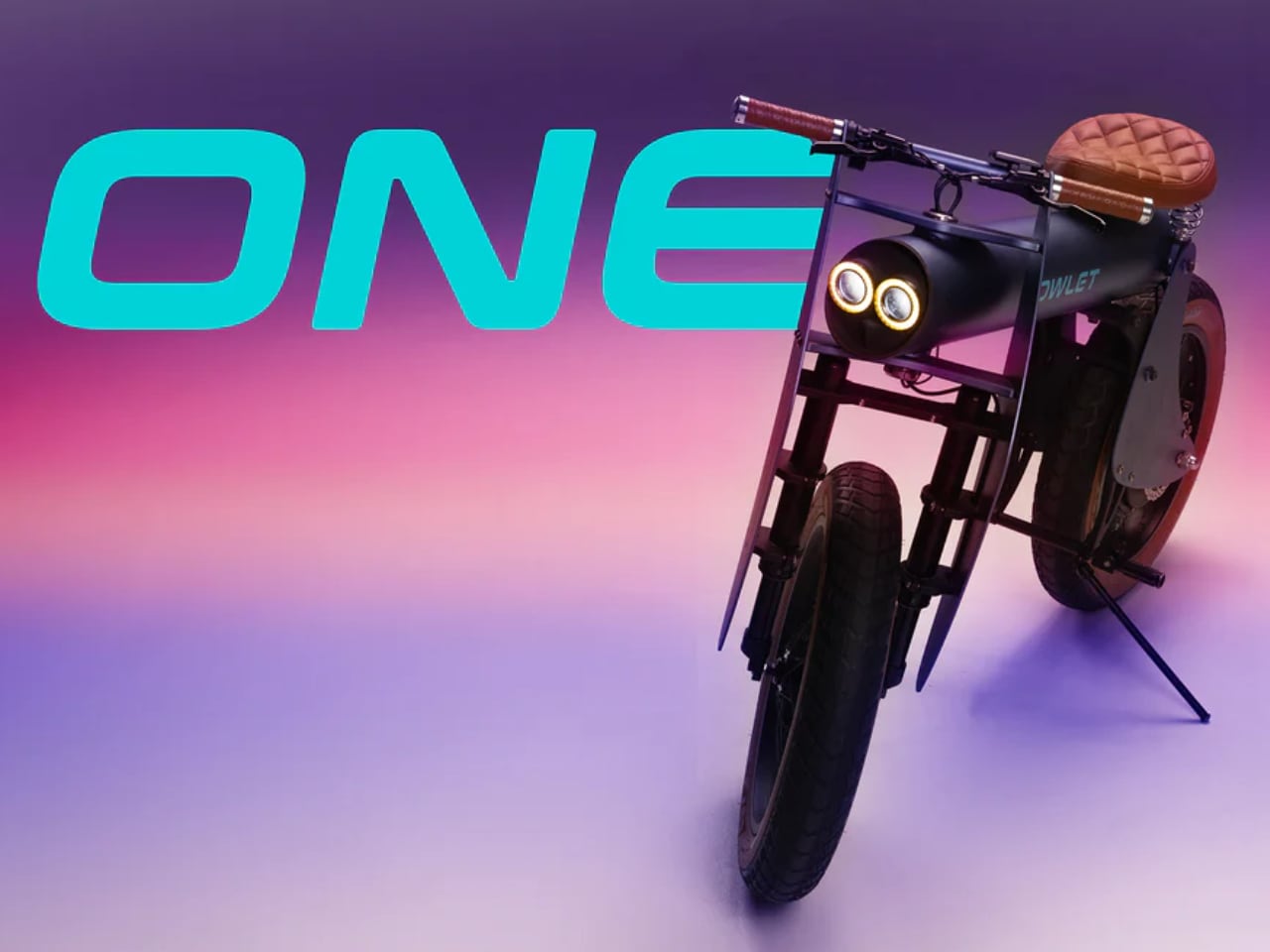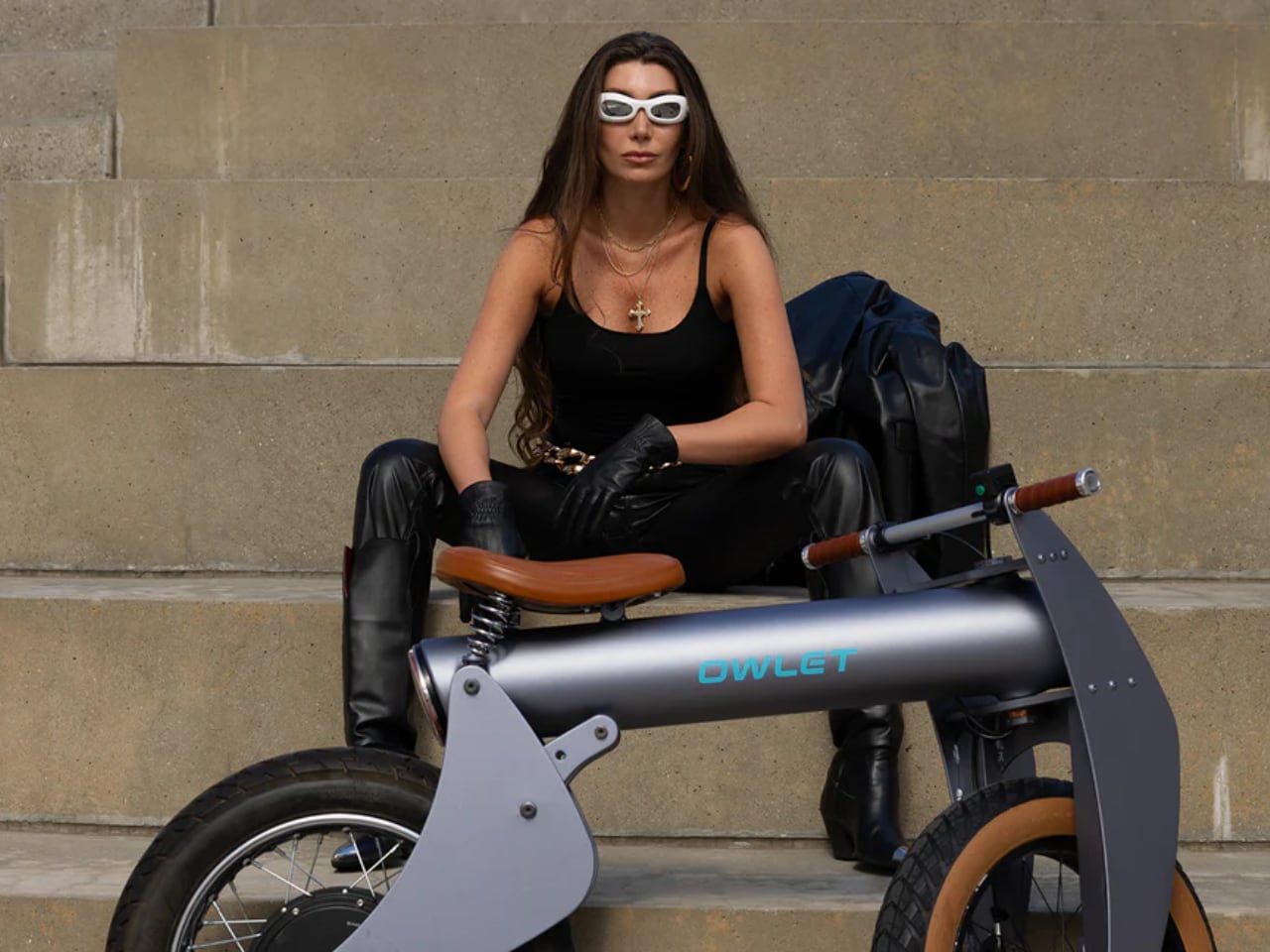The Owlet ONE is a striking blend of minimalism and functionality, designed to offer a modern yet nostalgic riding experience. Crafted from high-quality, matte-finished aluminum, the bike’s robust frame provides durability while maintaining a sleek, clean look. One of the most interesting aspects of the Owlet ONE is its cylindrical central frame, which houses the battery and essential components. This design streamlines the bike’s appearance and protects its core elements from environmental damage, providing a smooth visual flow and making the bike appear sturdy and aerodynamic.
Designer: Owlet

Owlet ONE
Attention to detail is evident throughout the Owlet ONE’s design. The retro-inspired brown leather saddle offers a comfortable ride, while the spring suspension beneath the seat absorbs shocks from rough terrains. The 31-inch seat height ensures a comfortable position for riders of various sizes, promoting an upright and relaxed posture. The slim handlebars, wrapped in matching brown leather, are ergonomically designed for a comfortable and secure hold, making the bike elevator-friendly and easy to maneuver in tight spaces.

OWLET ONE Details
Designed with convenience in mind, the Owlet ONE features foldable footrests, allowing it to be stored easily in a car trunk or at home. The aviation-grade aluminum construction, designed with sustainable manufacturing processes, minimizes metal processing and welding, reflecting a commitment to eco-friendly production. Owlet engineering is both functional and visually stunning, setting a high standard in micro-mobility. Owlet ONE reflects a dedication to a greener, cleaner future. Sustainability is integral to its engineering philosophy, focusing on reducing environmental impact while enhancing the joy of riding.

The Owlet ONE is equipped with wide 20-inch fat bike wheels and CST grippy road tires, which enhance the bike’s visual appeal while promising excellent traction and stability. These wheels provide outstanding performance both in the city and off-road, making the bike versatile for different terrains. Shimano hydraulic disc brakes ensure reliable and responsive braking performance, adding an extra layer of safety.
Functional components are seamlessly integrated into the bike’s design. The dual 30-watt LED “Angel Eyes” headlights and the blinker feature enhance visibility and safety during nighttime rides. The rear light follows a similar design language, integrating smoothly into the bike’s structure. The front side panels mask a suspension fork with air dampening, improving ride quality over uneven urban terrain.
The bike’s unique geometry and customizable wheelbase allow agile handling and a tailored riding experience. The ability to adjust the wheelbase from 25 inches to 40 inches lets riders choose between a more compact setup for urban environments and a stretched configuration for stability at higher speeds. The 6-degree to 10-degree rake angle and significant trail size contribute to the motorbike-like thrill, ensuring a responsive and engaging ride.

Recognizing that many e-bike riders prefer to throttle through commutes and urban adventures, LA-based startup Owlet designed the Owlet ONE without pedals. This high-torque, angular bike weighs 86 pounds and operates more like a sit-down electric scooter, reflecting the observation that pedals are seldom used in high-power e-bike riding. This new class of urban transportation is lightweight, mobile, compact, and powerful.
The 750-watt continuous 3,000-watt peak direct drive motor delivers up to 180 Nm of torque, providing great acceleration and hill-climbing performance. This setup creates an engaging “fly-away” feel, while the whisper-quiet operation ensures a smooth and silent ride. The motor is also service-free and reliable, enhancing the overall riding experience.
It boasts an impressive 1,500 Wh (56V 30Ah) battery, offering a range of 40 to 60 miles depending on usage. The 400-watt charger can bring the battery to 70% in 2 hours and fully charge it in 3.5 hours. The battery case, made from fire-safe aluminum, houses LG battery cells with pure nickel and copper contacts, ensuring durability and safety. The bike also features a smart BMS for battery management, further enhancing its reliability. Charging is convenient as the battery can be charged without removal using a standard XT60 connector.

GPS tracking adds an extra layer of security, allowing riders to track the bike’s location. This feature, combined with the stealthy and silent direct drive motor, makes for a discreet yet powerful ride. The bike is also Class 2 e-bike compatible, eliminating the need for a driving license, registration, or insurance, making it perfect for grab-and-go riding.
For those interested in owning an Owlet ONE, joining the waitlist guarantees a reservation between 1 and 100, securing a top spot in the delivery queue. The first 100 customers will enjoy personalized branding with their initials on the product, ensuring a unique and exclusive Owlet Bikes experience.

Overall, the Owlet ONE’s design blends thoughtful engineering and aesthetic coherence. It balances modern technology with retro elements, creating a practical and visually captivating product. Whether for daily commuting or leisure rides, this bike promises a blend of style, comfort, and functionality, making it a great choice if you’re in the market for an e-scooter.
The post Owlet ONE Is A Unique Looking Foldable, High-Torque E-Bike for Urban Commuters first appeared on Yanko Design.